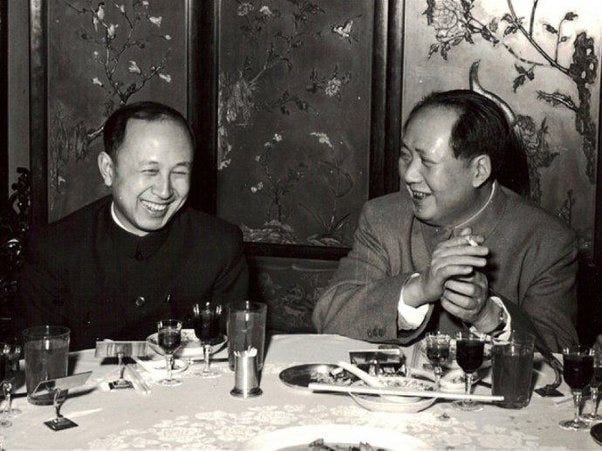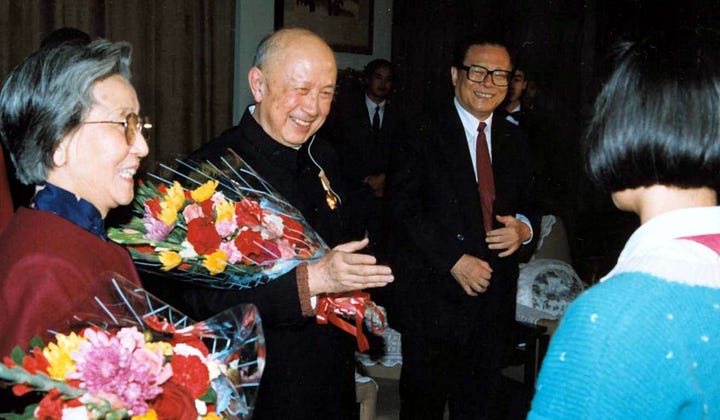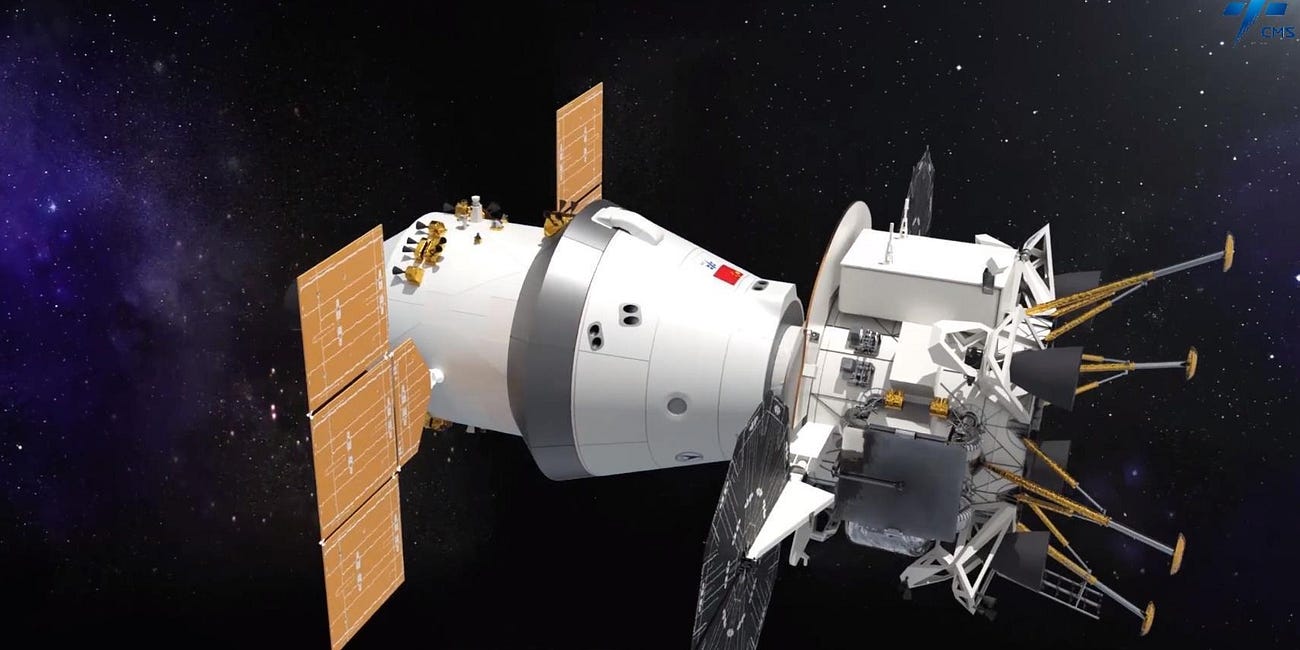America Produces More Qian Xuesens
And what the mess at NASA means for China.
In the latest move of the United States of America ‘cutting off its nose to spite its face’, the country is set to “aggressively revoke” visas of around 280,000 Chinese students studying in the country. The move was boasted by U.S. Secretary of State Marco Rubio as “enhancing scrutiny” on those studying in America, along with:
“Under President Trump's leadership, the US State Department will work with the Department of Homeland Security to aggressively revoke visas for Chinese students, including those with connections to the Chinese Communist Party or studying in critical fields.”
It’s incredibly unclear how the U.S. will determine if a student is connected to the Communist Party of China, possibly just deporting broad groups of students, but the fields set to experience a brain drain are known. U.S.-designated critical research fields include AI, quantum technologies, biotechnologies, advanced computing, microelectronics, hypersonic technologies, space technologies, advanced materials, energy technologies, and autonomous systems.
In response to the latest discriminatory move by the U.S., Chinese universities have begun offering unconditional offers to students affected, with officials supporting the universities.
All of these moves have been seen before, in a way, with the case of Qian Xuesen. And now the U.S. is repeating that case on a massive scale.
For those unfamiliar with Qian Xuesen (钱学森)1, he was a prominent aerospace engineer and physicist who played a key role in the early development of American rocketry. However, during the McCarthyist Red Scare in the 1950s, he was accused, without substantive evidence, of harboring communist sympathies. Due to the Red Scare, he was stripped of his security clearance and detained under virtual house arrest for several years. Qian eventually agreed to return to China in 1955 as part of a swap for American pilots captured during the Korean War.
Upon returning to China, Qian was quickly welcomed by the nation’s leadership, including Premier Zhou Enlai and Chairman Mao Zedong, who recognized the immense value of his scientific knowledge. As such, he became a central architect of China’s ballistic missile and space programs, directing key initiatives that led to the successful launch of China’s first satellite, DongFangHong-1, in April 1970. Additionally, his sustained collaboration with successive Chinese leaders enhanced his impact, enabling him to shape national science policy and contribute to the formulation of a long-term vision for China's space technology development.
Qian’s contributions earned him the title of ‘father of China’s space program’, the high praise of successive Chinese leaders, and a museum dedicated to him following his passing.




Qian’s deportation was later widely regarded in U.S. scientific circles as a major strategic error, as Qian would go on to transfer his expertise to the People's Republic of China at a critical moment in its modernization and technological development.
If one Qian Xuesen was able to help pioneer China’s space program, imagine what up to 280,000 Qian Xuesens could do across a wide variety of industries!
Sadly, anyone who knows anything about U.S. and Western history is aware of the deep roots of the political motives that led to the current deportations, as well as Qian Xuesen’s. Those roots are, detailed at length in section three of John Kuo Wei Tchen and Dylan Yeats’ book Yellow Peril! An Archive of Anti-Asian Fear2, a deeply embedded, long-standing pattern of racialized suspicion, exclusionary policies, and fear-based narratives that have repeatedly cast Asians as permanent foreigners and potential threats to national security. These roots in legislation, media portrayals, and political rhetoric are instrumental in both the targeting of Qian Xuesen and in shaping the political framing behind more recent deportation efforts.
And if the loss of thousands of highly educated intellectuals wasn’t enough, senior officials in the Trump Administration are deciding to debilitate NASA through major defunding and program cancellations. Cuts include canceling the Space Launch System Moon rocket and Orion spacecraft after Artemis III, canceling the Gateway space station, and scrapping key science missions such as VIPER, which was planned to search for water ice on the lunar surface. Furthermore, science-focused programs are being downsized or eliminated to allow human-exploration systems and hardware to remain competitive with China’s space plans. In place of the cancelled hardware would be private sector alternatives, currently unproven compared to existing NASA hardware.
The related documents did not explain how the U.S. maintains its competitiveness with China through winding down and eliminating programs. With fewer American missions, China is going to start evaluating its achievements in space exploration with those from Europe instead, while collaborating with the continent. Effectively making the country the world’s preeminent space-faring nation (which the U.S. “warned” about).
In short, America has declared it is going to win the ‘second space race’, and then begun sawing off its legs while providing China an easy boost. Meanwhile, China has realized the shortcomings of entering into a race to the Moon, rhetoric and planning-wise, and is going at its own pace:
China Is Not Racing to the Moon
This decade will see humans return to the Moon from two nations, the United States and China. China plans to land its first two taikonauts before 2030 (with hints of a 2028 landing), while the U.S. expects to land a crew of two astr…
Born December 11th 1911 in Shanghai, died October 31st 2009 in Beijing.
Pages 221-336. ISBN: 978-1-78168-123-7





We effectively traded a co-founder of JPL, whose work was foundational to our own ballistic missile programs, only to see him create China's entire Dongfeng missile and Long March space architecture from scratch. To now risk institutionalizing that historic error across the fields of AI and quantum C4ISR is to willfully forfeit our technological edge in the Pacific. https://ordersandobservations.substack.com/
I was hoping you would write about Qian! Qian and his colleague at Caltech's GALCIT, Frank Malina, were laying the foundations of US rocketry while Sturmbannführer Von Braun was still complaining about the workmanship of his 1000s of slave laborers from camp Dora. But Qian and Malina were from migrant backgrounds and organizers for the CPUSA so they were persecuted by the FBI, exiled, and subsequently written out of the history of US astronautics in favor of Von Braun's Nazi rocketeers. Malina found refuge in Europe working for UNESCO but never worked in rocketry again. We should all be grateful that Mao and Zhou recognized Qian's abilities and allowed him to continue what he started at GALCIT.